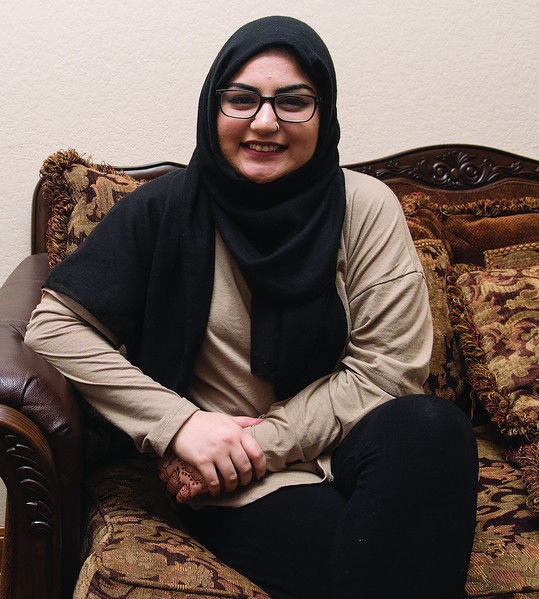Henna tattoo artist shares art, culture
Published 6:43 pm Wednesday, June 28, 2017

- Huma Sajid of Tyler is a self taught henna artist who uses organic henna to design intricate temporary tattoos. (Sarah A. Miller/Tyler Morning Telegraph)
For the past six months, Huma Sajid has made it her goal to improve her skills as a henna tattoo artist and share her culture with others.
Through her work and social media pages, Sajid is not only spreading her knowledge about the art form, but also learning from others who do it.
Trending
“I like educating others about the significance of it as a part of other people’s cultures,” Sajid, 19, of Tyler, said.
Sajid, who is studying business at Tyler Junior College, has been into henna since she was a child, but only recently started working to perfect her skills and promote her work.
Henna is a dye made from a plant and is used to create temporary tattoo-like artwork on skin.
Sajid said the twigs and flowers of the plant are ground into a fine powder that can be mixed with water or lemon juice. Then essential oils and sugar can be added. Sajid puts lavender, citrus and sometimes eucalyptus essentials oils in her henna.
Once the ingredients are mixed, the paste is put into a cellophane cone and squeezed out of the tiny tip onto people’s skin.
Women typically get henna done on their hands, arms, feet and/or legs.
Trending
Though Sajid has never done it, she said some women get henna done on their head – it’s called a henna crown – when they are battling cancer and lose their hair. Others get henna tattoos on their belly when they are pregnant.
Designs vary with some more floral in nature and others incorporating more geometric shapes and abstract symbols.
There also is a change in design depending upon the age of the client. Children typically have simpler designs and they get more complex as they get older.
Henna tattoos do not have religious meaning so much as cultural ones, though they are common during important religious holidays. Weddings also are a popular time for women to get henna done.
On a recent Saturday, Sajid did Henna for several clients. Two of them were sisters – Omama Qureshi, 19, and Saalika Qureshi, 9. The sisters were getting the henna done for Eid al-Fitr, one of the major Islamic holidays.
Sajid sat on the sofa with each sister as they got their hands done. With the cone in her right hand, Sajid began putting the henna on the girls’ wrists and hands. The process appears similar to icing a cake, but with much more intricate designs and a smaller cone.
It takes Sajid between five minutes to one hour to complete the henna depending on the design. Sajid charges between $15 and $60 for her work.
She said there are things she cannot do because her skill level isn’t there yet, such as intricate paisley designs.
Once the henna is complete, clients wait for it to dry, which takes about 30 minutes. However, they wait a couple hours before removing the raised part of the paint, which leaves the deep reddish brown stain behind. The longer they wait to remove the raised part combined with how often they wash their skin determines how long the henna tattoos will last. One to three weeks is typical, Sajid said.
Sajid’s emphasis with her work is the organic nature of it. Growing up in Tyler, the henna she got was artificial and had chemicals in it. In addition to smelling badly, it also can irritate the skin and, in extreme cases, burn it.
About two years ago, she started researching if organic henna existed. When she found out it did and learned she could make her own, she started to do so and to share it with others.
She makes henna about twice a month. It can freeze up to six months, she said.
As far as the designs, Sajid is always on the lookout for new ones. The ones she uses are a combination of her own creations and those she sees online.
For Eid al-Fitr this year, she made a lookbook of sorts by putting papers with her designs drawn on them in a binder so she could show clients.
Sajid accepts all clients. They don’t have to be of a particular culture or faith.
Though a steady hand, speed and good design sense help make a good henna tattoo artist, they’re not everything, Sajid said. The heart behind the artist matters.
“You’re working toward giving your clients the best,” she said.
TWITTER: @TMTEmily
A CLOSER LOOK
To learn more about Huma’s Henna, visit her Facebook and Instagram pages.







